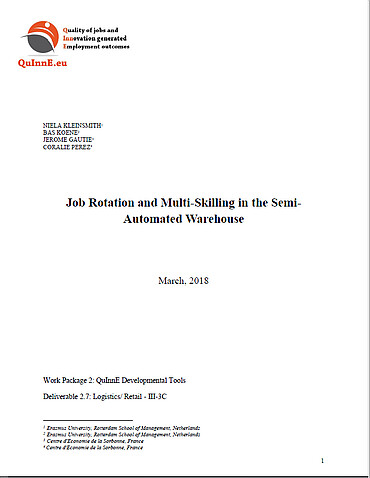Citation Note
Based on field research; 5 pages.
Follow the 'handle' link to access the Case Study on RePub.
For EUR staff members: the Teaching Note is available on request, you can contact us at rsm.nl/cdc/contact/
For external users: follow the link to purchase the Case Study and the Teaching Note.
Abstract
With the introduction of automation and digitalized processes in the warehouse, and the dramatic growth of online shopping resulting in longer operating hours and higher product flows in warehouses, workers in the retail logistics industry are on the one hand, being squeezed out of their jobs, and on the other, being asked for ever greater flexibility in decreasingly skilled jobs with reduced wages for their efforts. Companies who have partially invested in automation technologies yet still require large amounts of manpower to operate their warehouses are trying to find solutions for their two biggest organisational constraints: how to build flexibility into their organisation to accommodate the high variability in customer demand, and how to keep their employees' mostly repetitive, low-skilled jobs sufficiently interesting and low-strain to retain their workforce at low wages. In an attempt to mitigate these two effects, logistics companies started introducing job rotation in their warehouses several years ago. However, whether employee job rotation and multi-skilling have actually benefitted employees remains uncertain. As one warehouse worker states: ''Does the accumulation of five poor jobs make an enriched job? I'm not sure, especially when you see the quality of each job.
Objective
1. Understand the implications of the automation and e-commerce revolutions on warehouse workers. 2. Explain the advantages and disadvantages for the company and the employees of job rotation in the warehouse. 3. Assess how multi-skilling might best be introduced and validated within the warehouse and the company. 4. Generate ideas on how best to meet both the company's and the employees' needs for flexibility and good working conditions.
